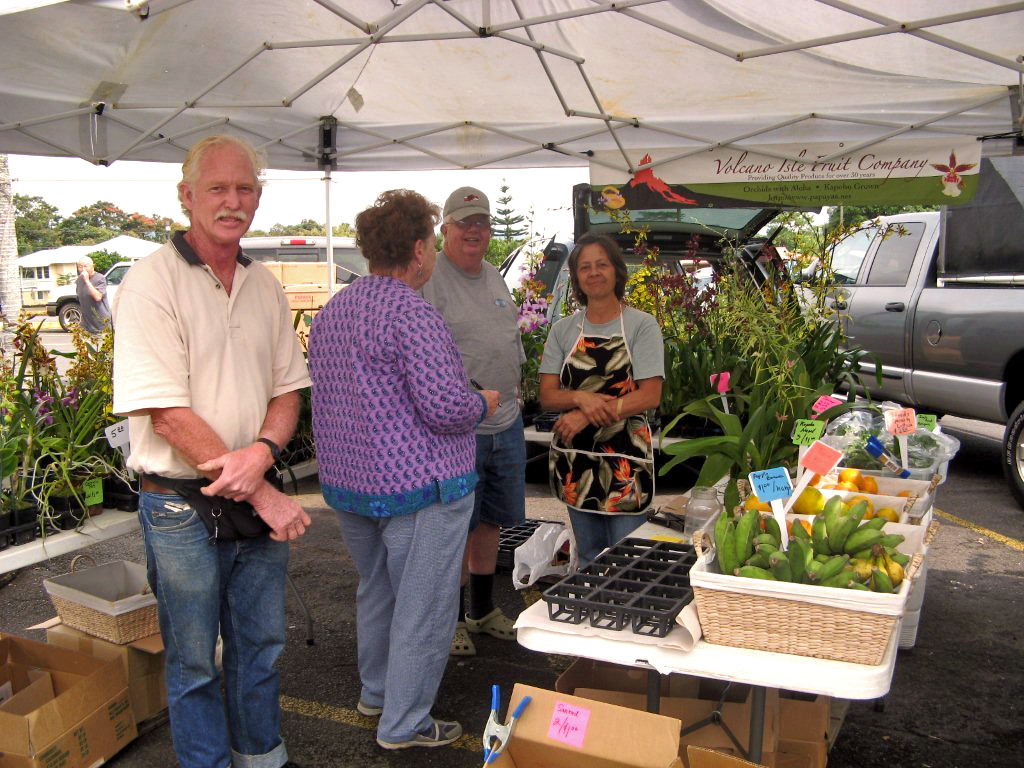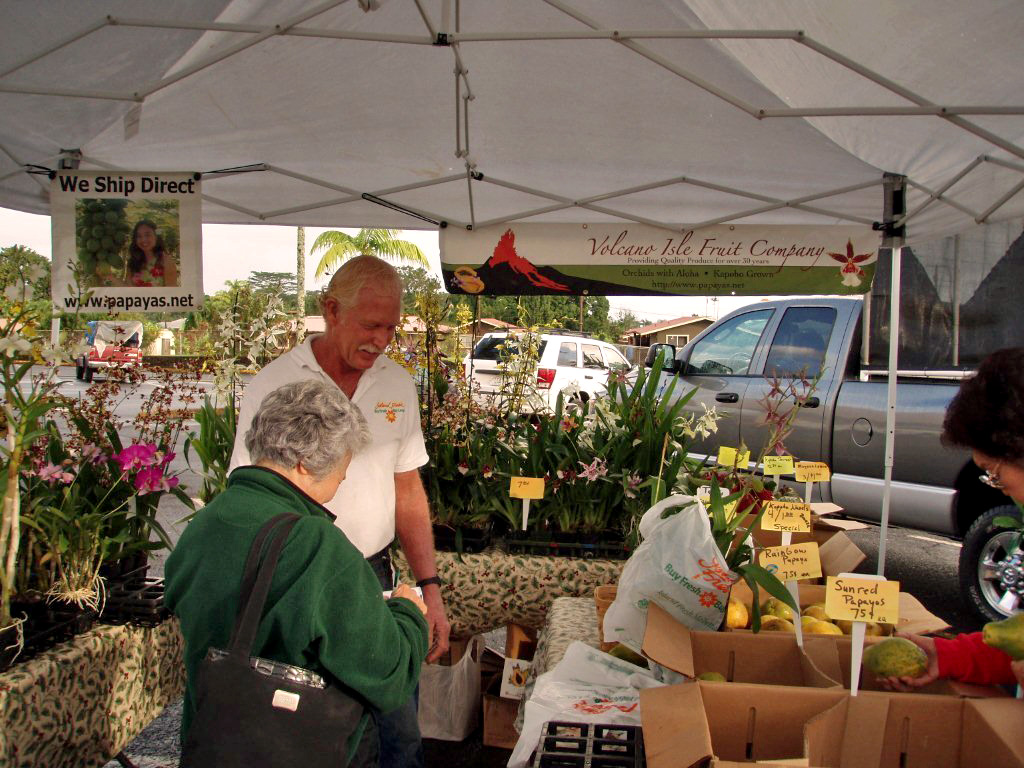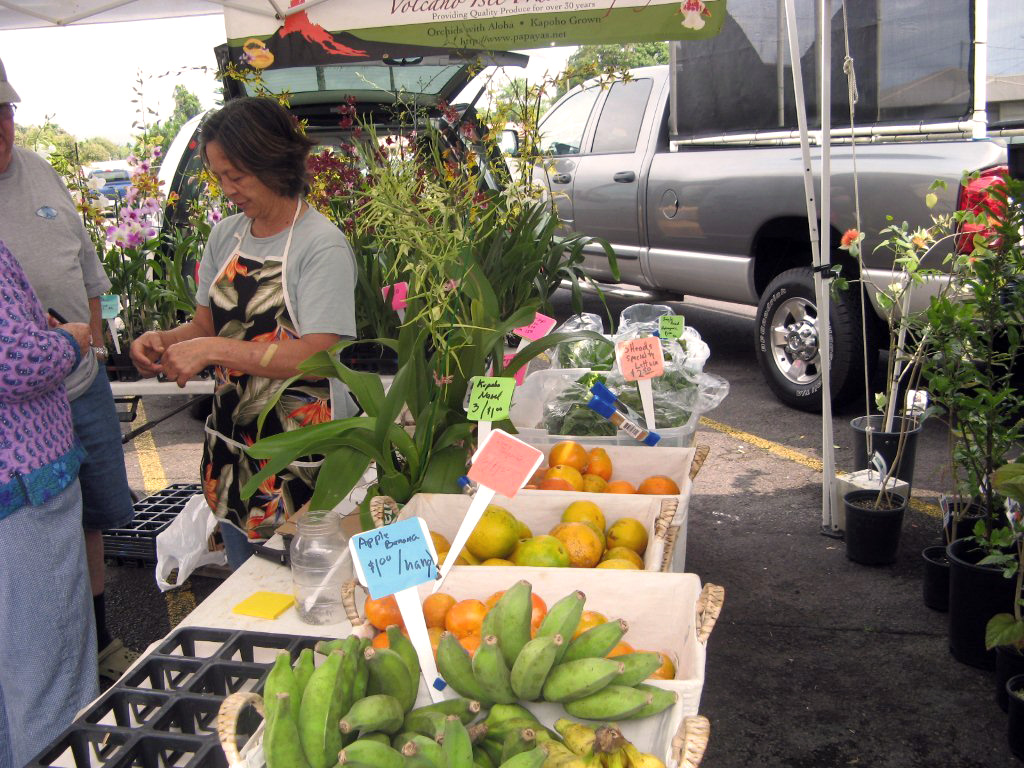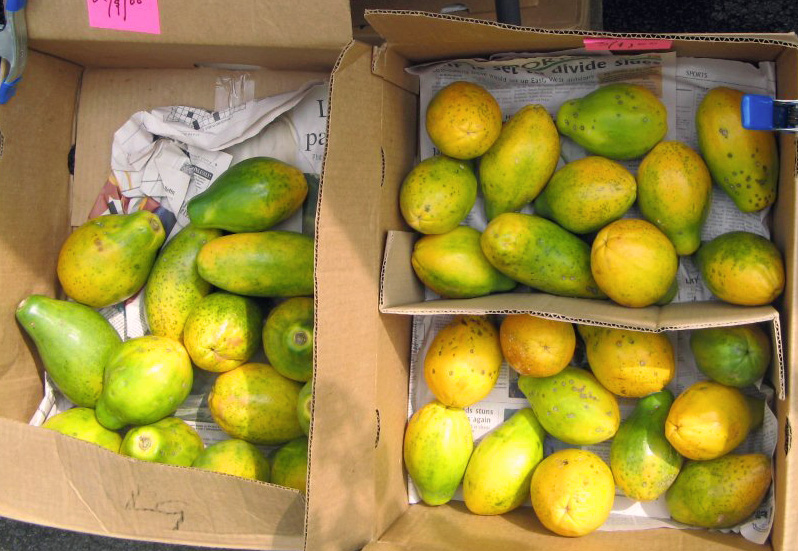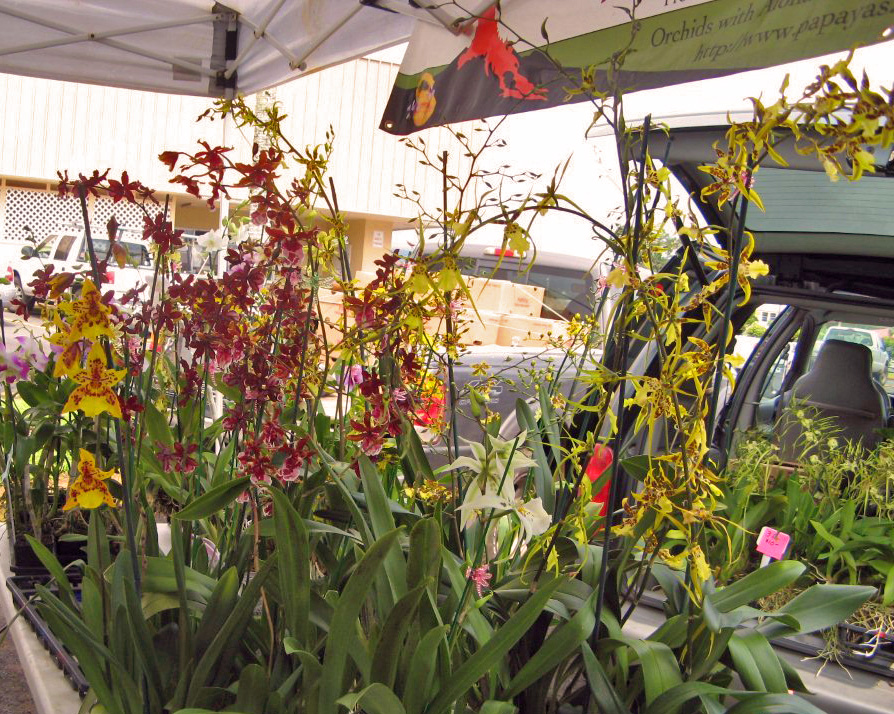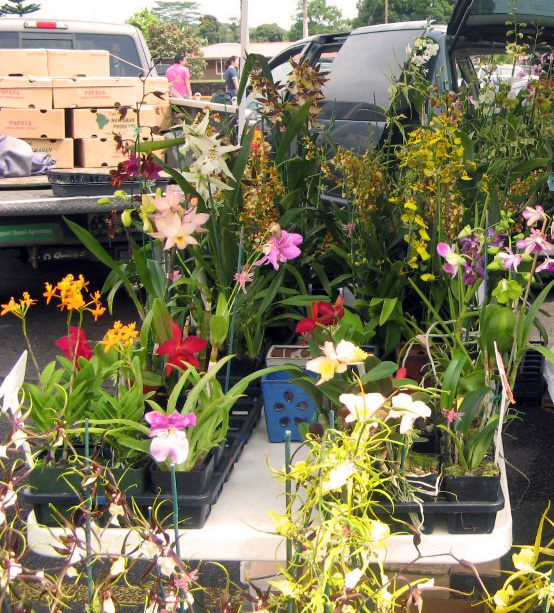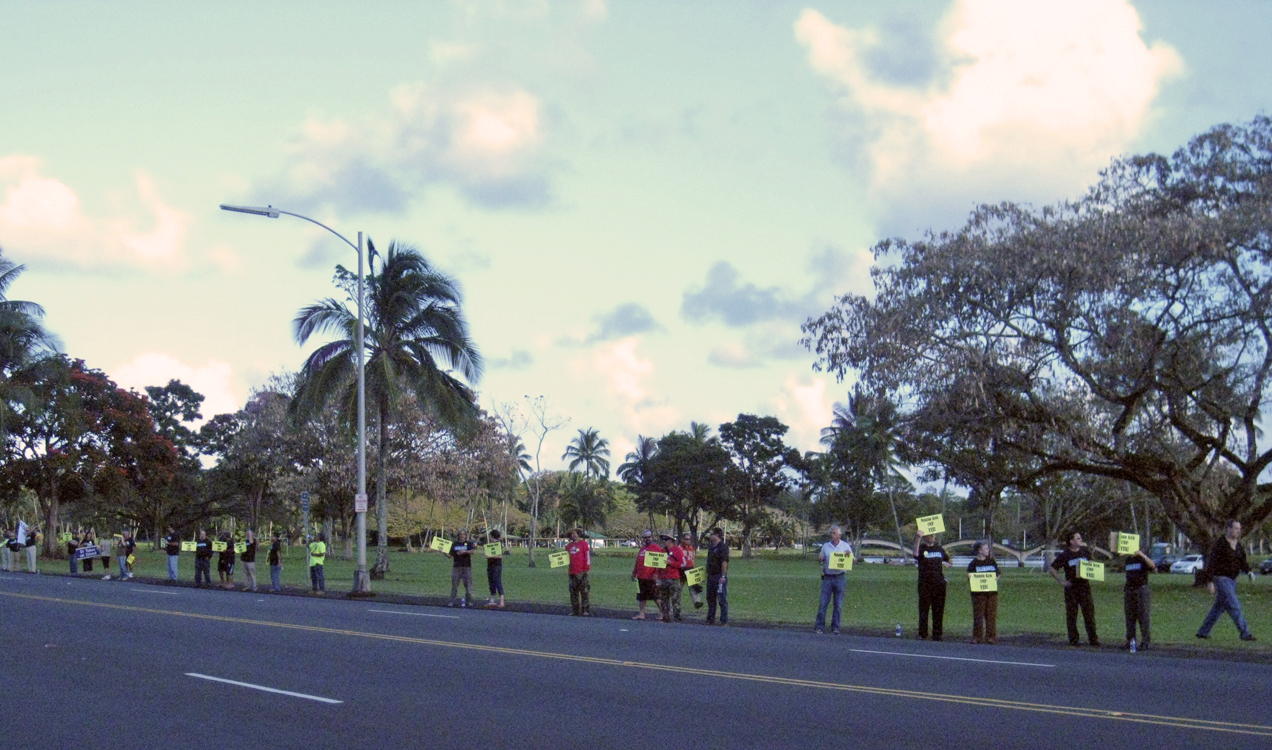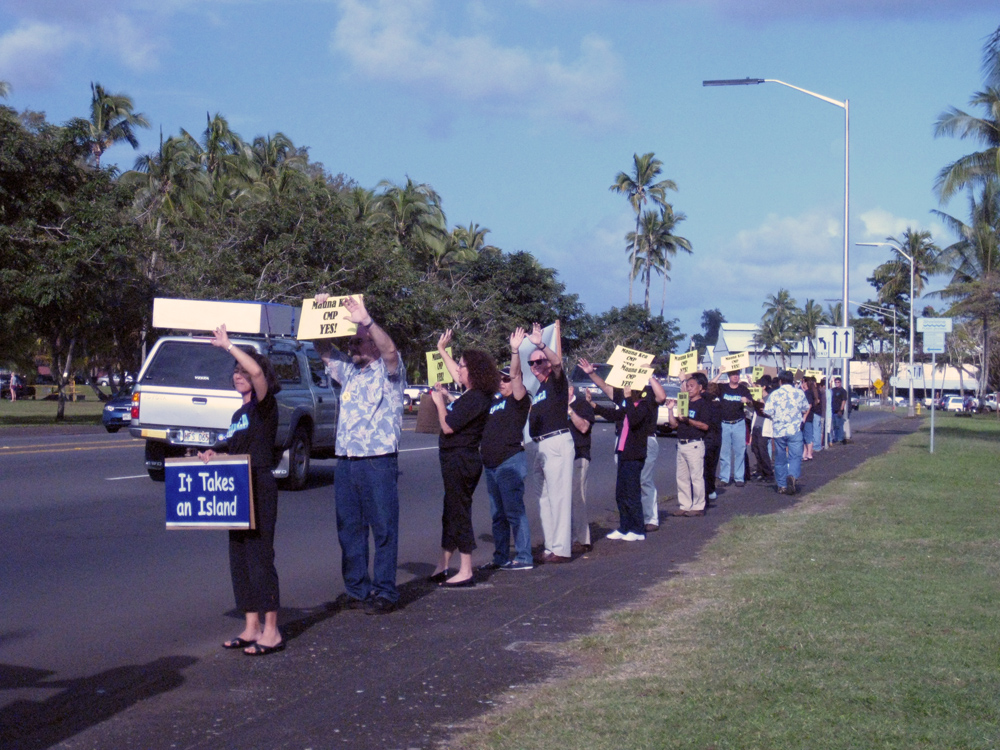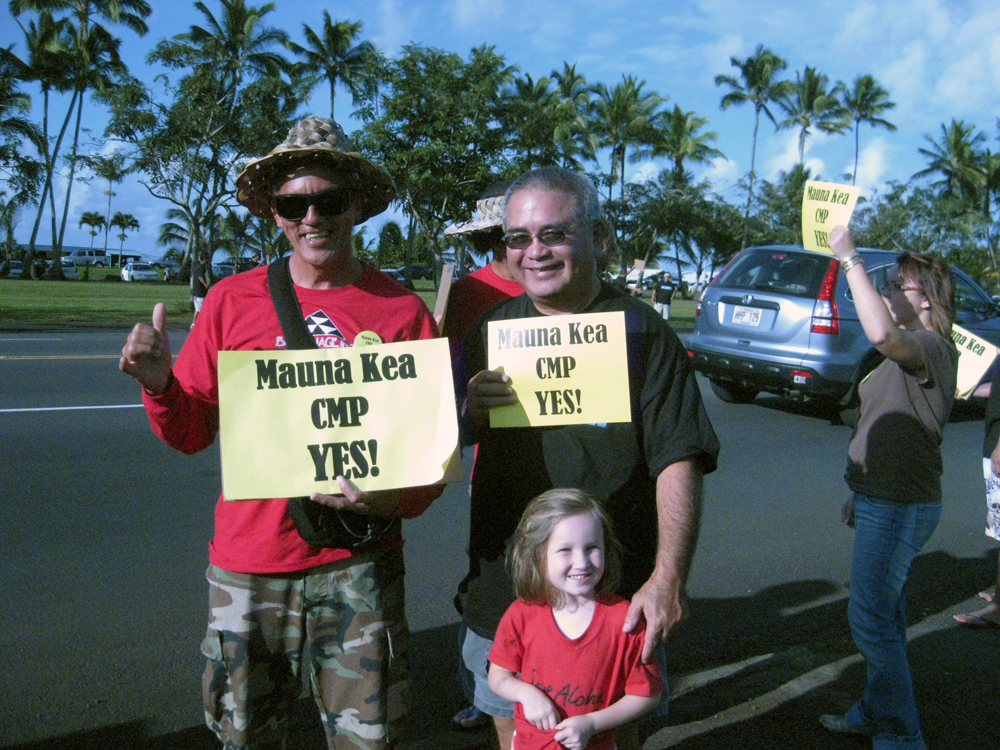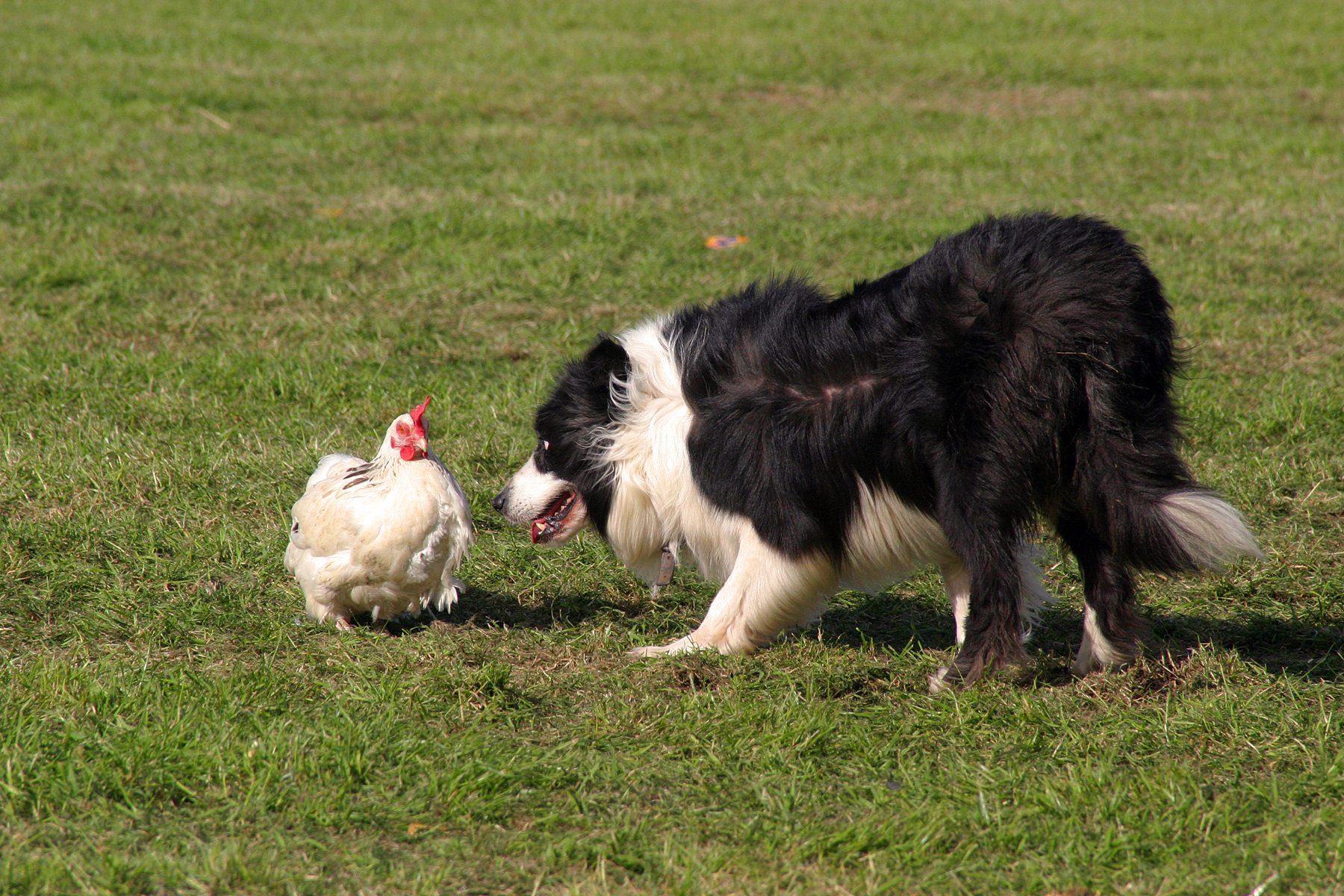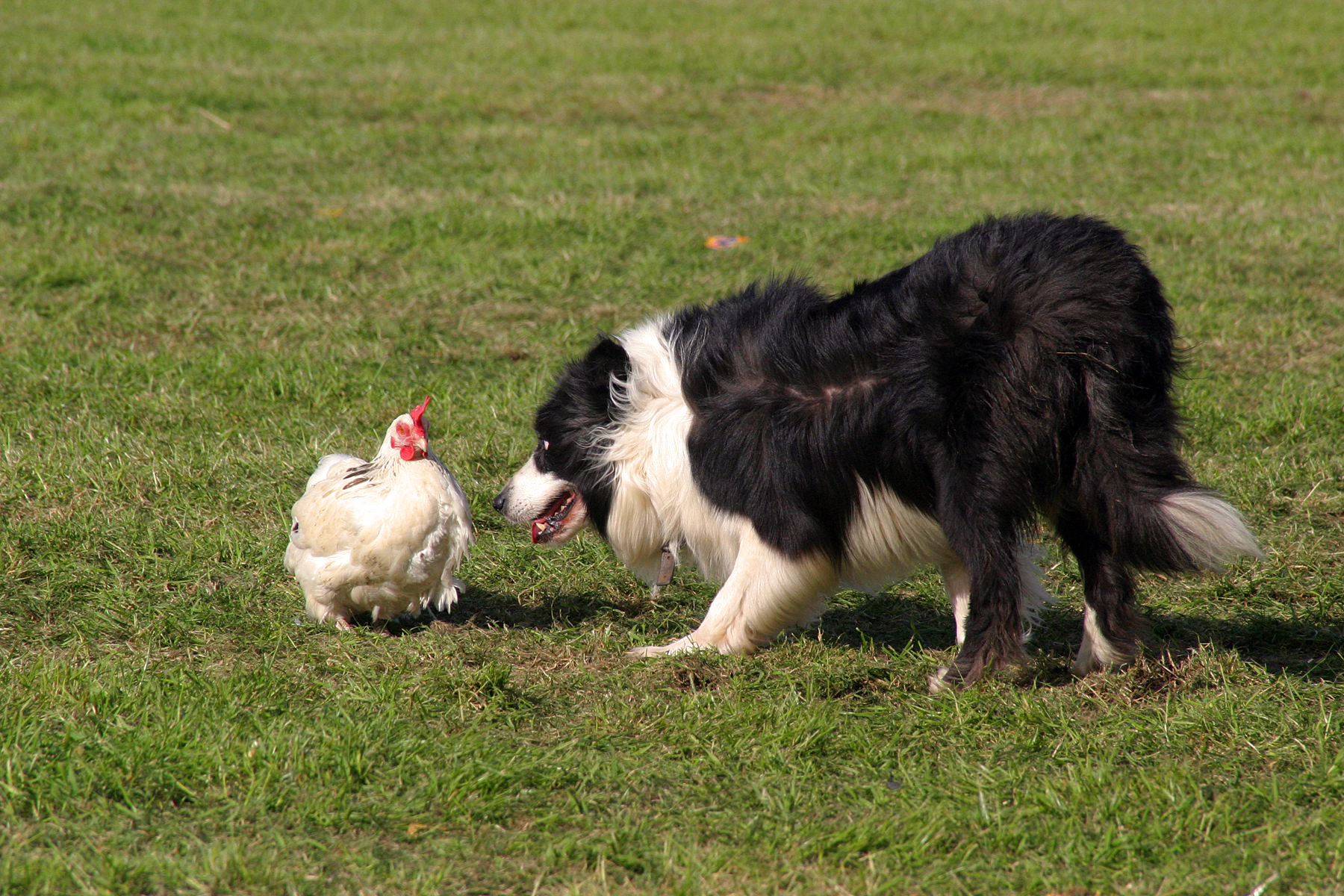Tom and Luana Beck own Ho‘oluana Ranch in Mountain View, where they raise livestock and native plants. Every Saturday morning from 7 a.m. to noon you can find them at the Kino‘ole Farmers Market, located at the Kino‘ole Shopping Plaza (the old Sure Save Market) at 1990 Kino‘ole St (at the corner of Kahaopea St.).
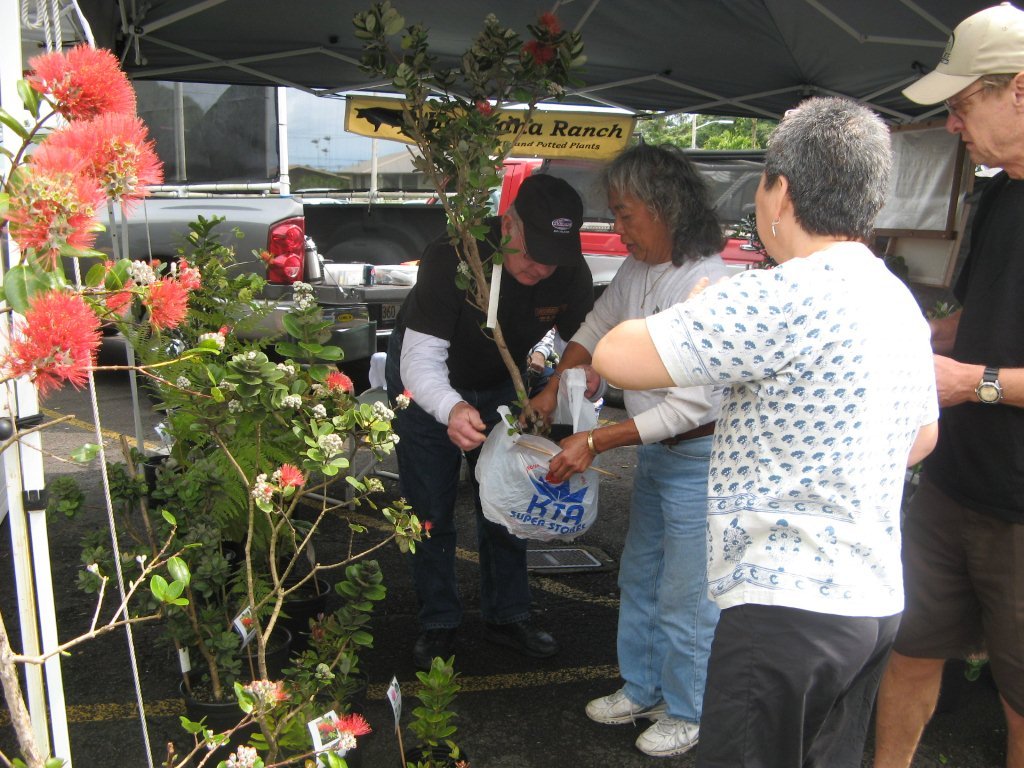 From left, Tom, Luana (holding plant)
From left, Tom, Luana (holding plant)
I asked Luana if she’s named after their ranch, or if the ranch was named after her, and she laughed. “I came first,” she said. “Ho‘oluana” means to relax, to be at ease, she explained.
They raise wagyu cattle at their place and sell the weaned cattle. “We’re trying to get the breed out there,” she said. “We’re selling them faster than we can get them.”
They also raise Peking ducks. “The majority of my ducks go to Waipi‘o Valley taro farmers,” she said. “They use them for the snails.”
What they bring to the market every week, though, are their native plants. “We do a lot of ‘ohi‘a,” she told me. “Red, yellow, orange. We also have an Australian ‘ohi‘a. My husband air layers the ‘ohi‘a at the ranch, and then after about eight or nine months, after we make sure they’re established, then we bring them down to the market.”
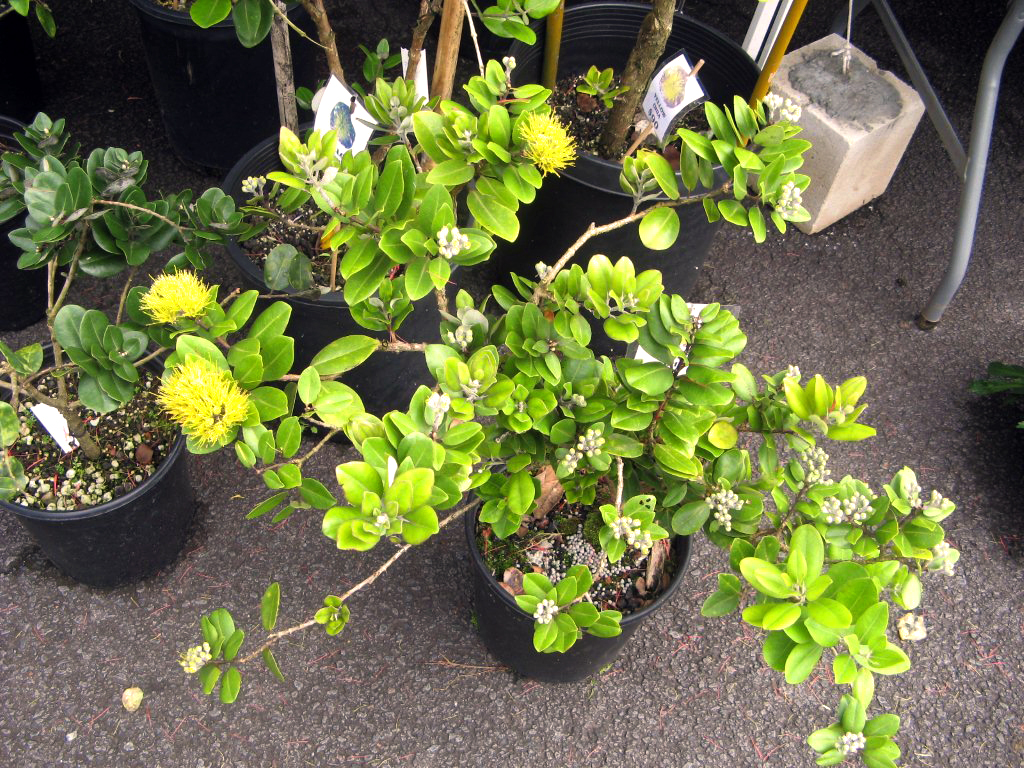 Baby yellow lehua
Baby yellow lehua
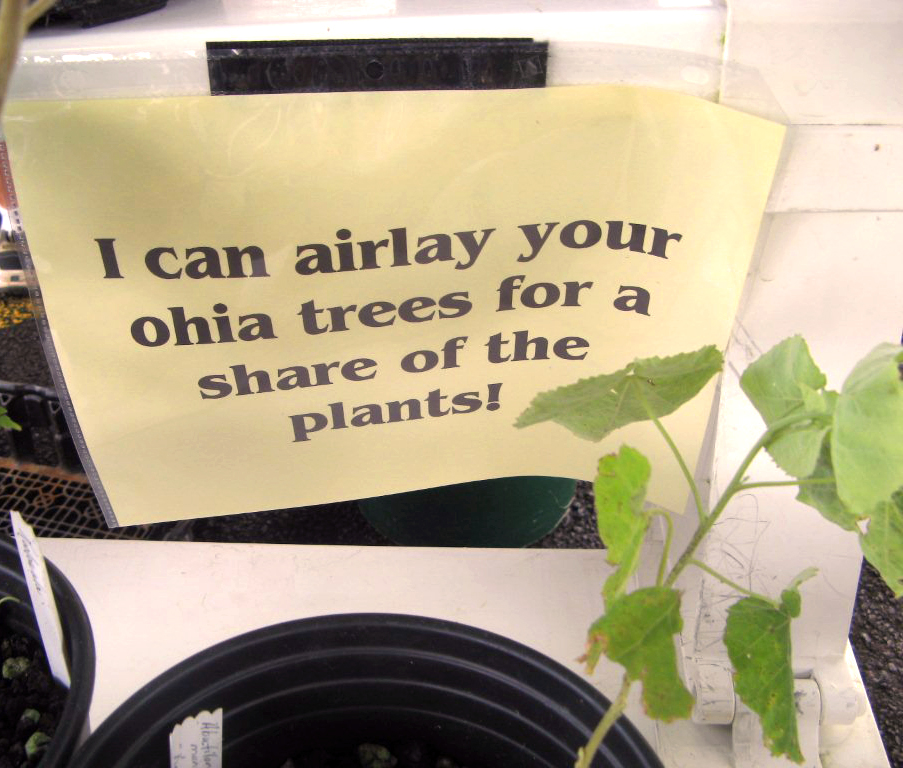
She also grows and sells different varieties of native hibiscus. “I have whites, yellow, which is the state flower, a couple varieties of red,” she said. And she raises endangered plants like ko‘oloaula, which she says pigs have almost decimated; ho‘awa, which is a native evergreen; palapalai, kokia and more.
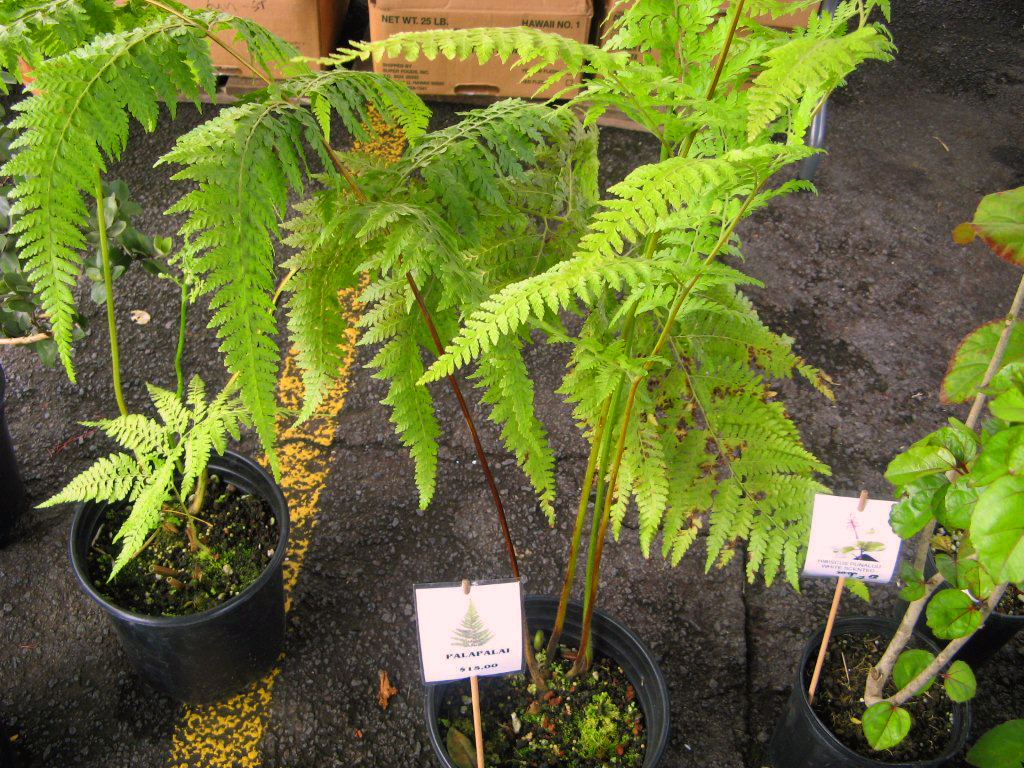 Palapalai
Palapalai
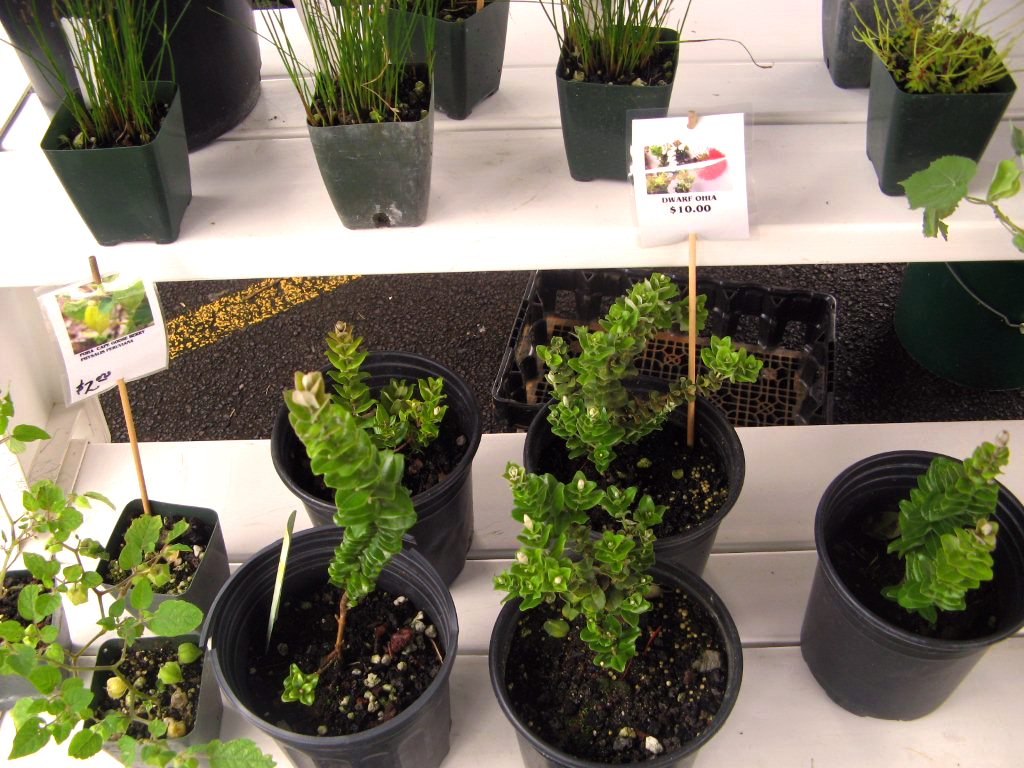
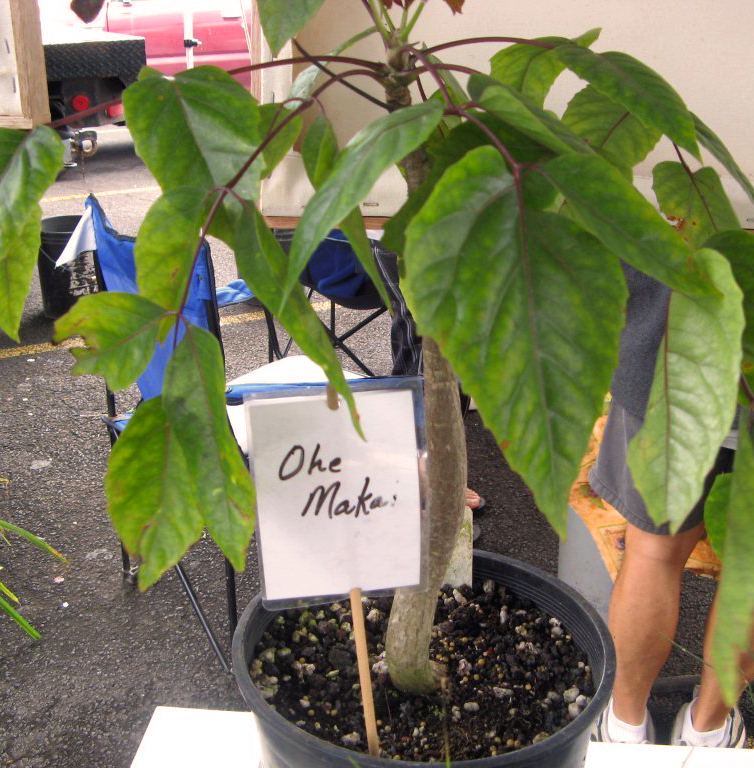
Before he went into the Army, my son Bryan worked with Tom (below left) at the Canada-France telescope.
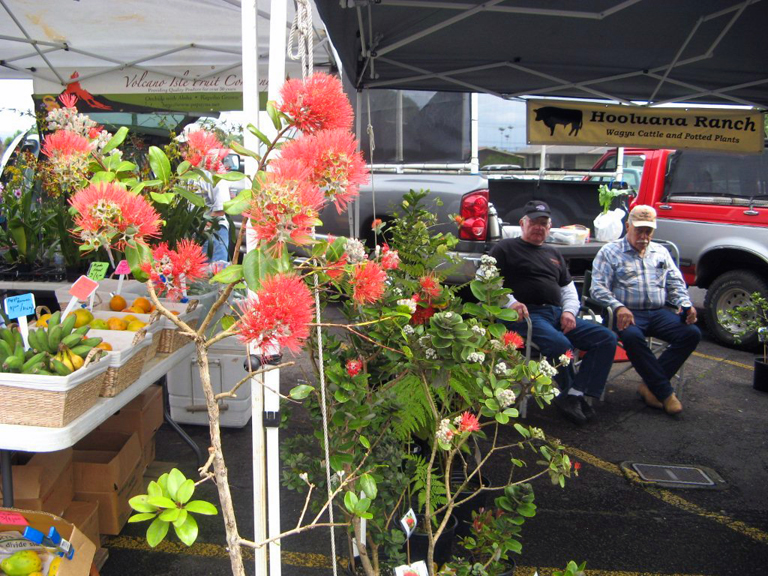
Luana is President of the Hilo County Farm Bureau, which, along with the County of Hawai‘i, started the Kino‘ole Farmers Market a couple years ago with six vendors. Now there are 20.
Part of what makes the Kino‘ole Farmers Market unique is that farmers (who must be members of the Farm Bureau) can only sell products grown here in Hawai‘i. If they are selling value-added products, those products must use a local product grown here.
Also, it’s really nice that you generally find the actual farmers there with their products, and can chat with them or ask questions.
“And we have a nice area,” she said of the market’s location. It’s surrounded by plenty of parking, and vendors set up tents over their tables. “It’s paved, so it’s really convenient. Some of our customers have been coming in wheelchairs, there are people with walkers, so it’s really convenient for older people to shop. We get a lot of people from the downtown market – I think because of that and also because it’s all local grown. Everything is from here.”
It’s also interesting in that every Saturday morning at 10 a.m. there’s an educational speaker. “Every week a different speaker comes in and talks about an ag-related issue,” she said, “whether it’s air layering, or the coqui frog….” There’s also a free chi gung class every Saturday at the market.
Listen to Mynah Bird on the radio (KHBC, 1060 AM) for information about what’s happening at the Kino‘ole Farmers Market every week. There’s also an email that now goes out to about 200 people every week; ask at the market to be added to the list.
“When we started, there were very few people,” said Luana. “But now it seems like we get probably 400-500 people coming by every Saturday.”
I asked her what her dream is for the market, and she said she’d like to see the whole parking lot full.
“We don’t want to get too big, and run out of space, but it would be nice to have about 30 regular vendors.”
It’s nice now, but that would be even better!

